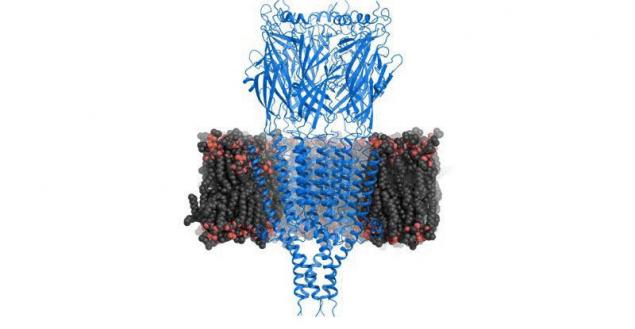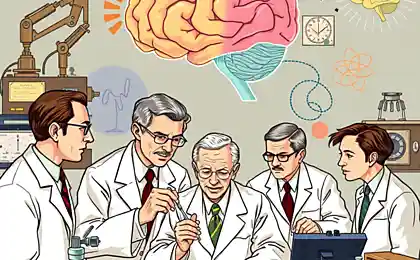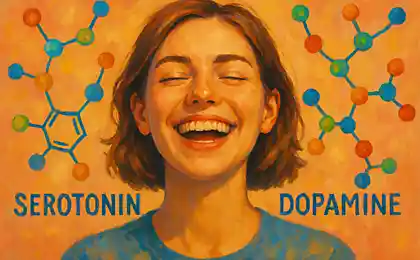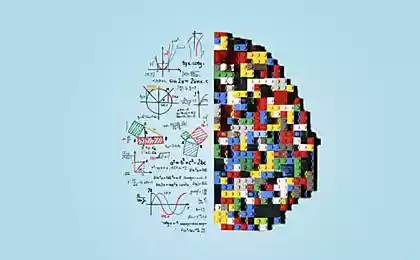433
We have identified the structure of the receptor of serotonin
For the first time by the method of crystallography has fully decoded the structure of the receptor of serotonin. The study, published on the website of the journal "Nature" on August 3, 2014, opens the way to developing new drugs that could control nausea, one of the main side effects of chemotherapy and anesthesia.

Communication between neurons in the brain provides receptors, i.e. cell membrane proteins, which can bind neurotransmitters. Serotonin is one of the most famous neurotransmitters. He is involved in the biology of the cycle sleep-wakefulness, pain, and anxiety. Serotonin receptor in the study is part of the "Cys-loop" family of receptors, which are extremely important from a pharmacological point of view. It includes the receptor, which binds nicotine, and also target receptors for anti-depressants (e.g., valium) and General anaesthetics.
Scientists have determined the complete structure of the receptor of serotonin in mammals (mouse), whose receptors are structurally similar to human. Previously studied only receptor in the family of Cys-loop using homologues, present in some bacteria. In order to determine the complete structure of the serotonergic receptors, the researchers had to overcome several obstacles, ranging from his production of cell lines grown in vitro, prior to its purification and crystallization. Then they map the protein by x-ray diffraction to show the position and organization of each of the amino acids that make up its structure.
These data shed new light on the functioning of this receptor, as it binds serotonin and transmits nerve signals. This discovery will pave the way for new medicines that can control nausea, one of the main side effects of chemotherapy and anesthesia.
The development of compounds directly based on the structure of the receptor can lead to the rapid discovery of drugs capable of binding to it and forming interactions. This receptor is also a potential target for other disorders that affect the digestive nervous system (such as irritable bowel syndrome) or Central nervous system (for some types of depression).
Source: globalscience.ru

Communication between neurons in the brain provides receptors, i.e. cell membrane proteins, which can bind neurotransmitters. Serotonin is one of the most famous neurotransmitters. He is involved in the biology of the cycle sleep-wakefulness, pain, and anxiety. Serotonin receptor in the study is part of the "Cys-loop" family of receptors, which are extremely important from a pharmacological point of view. It includes the receptor, which binds nicotine, and also target receptors for anti-depressants (e.g., valium) and General anaesthetics.
Scientists have determined the complete structure of the receptor of serotonin in mammals (mouse), whose receptors are structurally similar to human. Previously studied only receptor in the family of Cys-loop using homologues, present in some bacteria. In order to determine the complete structure of the serotonergic receptors, the researchers had to overcome several obstacles, ranging from his production of cell lines grown in vitro, prior to its purification and crystallization. Then they map the protein by x-ray diffraction to show the position and organization of each of the amino acids that make up its structure.
These data shed new light on the functioning of this receptor, as it binds serotonin and transmits nerve signals. This discovery will pave the way for new medicines that can control nausea, one of the main side effects of chemotherapy and anesthesia.
The development of compounds directly based on the structure of the receptor can lead to the rapid discovery of drugs capable of binding to it and forming interactions. This receptor is also a potential target for other disorders that affect the digestive nervous system (such as irritable bowel syndrome) or Central nervous system (for some types of depression).
Source: globalscience.ru























